Tamasha (Marathi: ?????) is a traditional form of Marathi theatre, often with singing and dancing, widely performed by local or travelling theatre groups within the state of Maharashtra, India. It has also been the subject of several Marathi films. Some Hindi movies have also included Tamasha-themed songs, known as Lavanis, in the past.
Traditional Tamasha is influenced by many Indian art forms and draws from such diverse traditions as kaveli, ghazals, Kathak dance, dashavatara, lalit and kirtan. There are two types of Tamasha: dholki bhaari and the older form, sangeet baari which contains more dance and music than drama. In Maharashtra, the Kolhati groups are traditionally associated with the performance of Tamasha.
Contents
Etymology
The word "Tamasha" is originally from Persian, meaning a show or theatrical entertainment of some kind. The word has spread to Armenian, Hindi, Urdu and Marathi, to mean "fun" or "play". In Armenian language "To do Tamasha" means "To follow an interesting process or entertainment". Colloquially the word has come to represent commotion, or any activity or display with bustle and excitement, sometimes in the sense of "a tempest in a teacup".
History
Origin and early years
The region of Maharashtra, has had a long theatrical tradition, one of the early references was found in the cave inscriptions at Nashik by Gautami Balashri, the mother of the 1st-century Satavahana ruler, Gautamiputra Satakarni. The inscription mentions him organizing Utsava and Samaja, forms of theatrical entertainment for his subjects.
Tamasha acquired a distinct form in late Peshwa period of Maratha Empire, in the 18th century, and incorporated elements of older traditional forms like Dasavatar, Gondhal, Kirtan, and Waghya-murali, part of Khandoba Bhakti Geet, amongst worshippers of the local god Khandoba.
In Maharashtra, there are two types of Tamasha, first is dholaki fadcha Tamasha and the other is sangeet baaricha Tamasha. Dholaki Fadcha tamasha is complete art, which includes song, dance, and theater. Now in Maharashtra there are only 18 to 20 full-time tamasha parties. Each tamasha mandal performs approximately 210 days in all over Maharashtra and also some border villages of Karnataka and Gujarat.
Traditional Tamasha format consisted of dancing-boys known as Nachya, who also played women's roles, a poet-composer known as Shahir, who played the traditional role of Sutradhar or a jester known as Songadya, who compered the show. However, with time, women started taking part in Tamasha. Marathi theatre made its beginning in 1843, and in the following years, Tamasha which was primarily constituted of singing and dancing expanded its thematic repertoire and added small dramatic and humorous skits, known as vag, to it. These were either in prose or comprised long narrative poems performed by the Shahir along with his chorus, with actors improvising their lines. Popular Vag composers of the time were Patthe Bapurao and Dattoba Sali, and one of their noted vag, Gadhavache Lagna (Marriage of Donkey) was popularized by Tamasha artist, Dadu Idurikar. Soon, noted Marathi writers started written Vags for Tamasha troupes.
As the textile industry started developing in Mumbai (then Bombay) in the 19th century, workers migrated here from the rural areas in large numbers. Soon their theatre did too, initially rural tamasha companies were invited to the city for performances. Though later numerous local tamasha companies flourished, patronized by mill workers living in Girgaum.
Traditional tamasha practitioners were from castes like Kolhati, Mahar, Mang and Bhatu from rural regions of Maharashtra, labelled low castes within the Indian caste system. Thus, in the late 19th century, religious reformers employed tamasha to castigate the caste system of the region. During the same period, Satyashodhak Samaj founded by Jyotirao Phule started organizing Satyashodhaki jalsa, which used the tamasha tradition in its political and reformist theatre, which was an amalgamation of proscenium tamasha and street theatre.
Post-independence
The rise of modern Marathi theatre movement in the post-independence era, which was largely "literary drama" from with a Westernized idiom, tamasha like other prevalent indigenous theatre forms, like jatra in Bengal and bhavai in Gujarat, was also deemed "debased", even "corrupt", while being relegated to being only "folk" form.[10] The turning away of urban middle class audience from traditional forms, cause a disruption in the theatrical traditions besides creating a divide between urban and rural theatre, as tamasha continued to flourish out the urban pockets.[11]
In 2002, the state had 450 tamasha troupes with approximately 10,000 artistes.[12]
Influence
Main elements of tamasha, like loud humour, suggestive lyrics and dance numbers, proved influential in the development the Bollywood idiom, which is based in Mumbai. Even today, the mainstream cinema or Masala films, complete with their suggestive dance numbers, now known as item number, and humour sequences remain largely entertainment oriented.[13]
Over the years, some modern theatre practitioners have incorporated the traditional forms like tamasha and dashavatar into their plays. In the 1970s, during the rise of modernMarathi theatre, the tamasha form was employed as narrative device and style in several notable plays like Ghashiram Kotwal by Vijay Tendulkar, Vijaya Mehta's Marathi adaptations of Bertolt Brecht's The Good Woman of Setzuan as Devajine Karuna Keli (1972) and Caucasian Chalk Circle as Ajab Nyaya Vartulacha (1974), P. L. Deshpande's Teen paishacha Tamasha (1978), an adaptation of Brecht's The Threepenny Opera.[14][15]
In popular culture
The 1972, Marathi hit film, Pinjra directed by V. Shantaram, starring Shriram Lagoo and Sandhya in lead roles was set in the Tamasha musical theatre.[16] Besides this other Marathi films made of Tamasha include, Sangte Aika (1959) directed by Anand Mane and starring Jayshree Gadkar, Sawaal Majha Aika! (1964) by Anant Mane and starring Jayshree Gadkar, Ek Hota Vidushak (1992) by Jabbar Patel, Natarang (2010) by Ravi Jadhav and Tamasha - Hach Khel Udya Punha (2011) by Milind Pednekar.[17]
A 2006 multilingual documentary film, Silent Ghungroos, traces the origins of Tamasha in the Peshwa period to its contemporary form, where the form competes with modern entertainment mediums.[18]
Tamasha in other languages
The word tamasha has been used in book and plays titles, including, Jaipur Tamasha, and theatre company, Tamasha Theatre Company.
- In the Telugu and Kannada language, tamasha means funny.[19]
- In the Kiswahili language "tamasha" means show or festival.
- In the Bengali language, tamasha (or in some dialects tamsha) means joke or messing around.
- In the Chuvash language "tamasha" means distress or curiosity, brings amazement effect into dialogue, and also means fun of silly situation in theatre or life.
- In the Malay language "temasya" means event or festival.[20]
See also
- Lavani
- Mangala Bansode
- Vithabai Bhau Mang Narayangaonkar
- Silent Ghungroos
- Prakash Khandge
Notes
- ^ a b "Tamasha", in James R. Brandon and Martin Banham (eds), The Cambridge Guide to Asian Theatre, pp. 108-9.
- ^ Varadpande, p. 167
- ^ No Aging in India: Alzheimer's, The Bad Family, and Other Modern Things by Lawrence Cohen ("The Zagreb Tamasha"; pp. 15-18).
- ^ a b Varadpande, p. 163
- ^ "Tamasha". Natya Darsham Sangeet Natak Akademi. 2010. Archived from the original on 19 December 2013. Retrieved 5 August 2013.
- ^ a b Varadpande, p. 170
- ^ Gyan Prakash (20 September 2010). Mumbai Fables. Princeton University Press. pp. 208–. ISBN 978-1-4008-3594-2. Retrieved 5 August 2013.
- ^ Dharwadker, p. 387
- ^ Deshpande, p. 91
- ^ Dharwadker, p. 135
- ^ Dharwadker, p. 137
- ^ "City's only tamasha theatre in a shamble". The Times of India. Aug 3, 2002. Retrieved 5 August 2013.
- ^ Daya Kishan Thussu (2007). News as Entertainment: The Rise of Global Infotainment. SAGE Publications. pp. 91–. ISBN 978-0-7619-6879-5. Retrieved 5 August 2013.
- ^ Dharwadker, p. 368
- ^ Dharwadker, p. 314
- ^ "The German Connection". Indian Express. Jan 15, 2006. Retrieved 3 August 2013.
- ^ "Marathi films based on tamasha". Daily News and Analysis. February 12, 2012. Retrieved August 22, 2012.
- ^ "From pen to picture". The Hindu. May 26, 2007. Retrieved 4 August 2013.
- ^ Susie J. Tharu and Ke Lalita, Women Writing in India: 600 B.C. to the present. The twentieth century.
- ^ "Maksud perkataan temasya mykamus.com".

Request Movie Now
Watch movie Tamasha online on Amazon
Watch movie Tamasha online
Watch The Movie On Prime
Aaram Full HD Movie Download
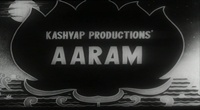
Free Love Full HD Movie Download

Romeo Juliet Full HD Movie Download

Aagey Se Right Full HD Movie Download

Delhi-6 Full HD Movie Download

Gauri (1968) Full HD Movie Download
.jpg)
Munimji (1955) Full HD Movie Download
.jpg)
Takkar (1980) Full HD Movie Download
.jpg)
Nasha Jism Ka Full HD Movie Download

Garam Bazaar-Alias Miss Bharti Full HD Movie Download
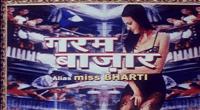
Nai Rat Nai Bat Full HD Movie Download
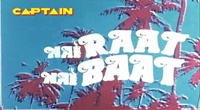
Rahasyam Full HD Movie Download
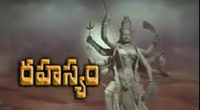
Soggadi Pellam Full HD Movie Download
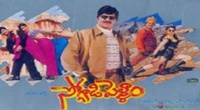
Moti Verana Chok Ma Full HD Movie Download
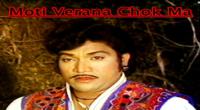
Vishnuvardhana Full HD Movie Download
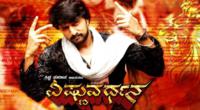
I Am Legend Full HD Movie Download

Batman and Robin Full HD Movie Download

Bharthavudyogam Full HD Movie Download
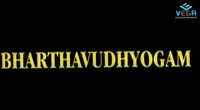
Don Seenu Full HD Movie Download
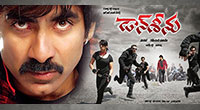
Mandupatara Full HD Movie Download
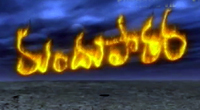
Surya Chandra Full HD Movie Download
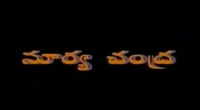

Download latest Movie from bollywood
- 1> baaghi 3
- 2> THE SKY IS PINK MOVIE FULL STORY AND REVIEW
- 3> Luka Chuppi
- 4> TO ALL THE BOYS I’VE LOVED BEFORE
- 5> Kabir Singh
- 6> Street Dancer 3D
- 7> Simmba
- 8> Gone Girl
- 9> The Girl Who Lived
- 10> Ludo
- 11> DILWALE DULHANIA LE JAYENGE
- 12> GUILTY
- 13> The Godfather
- 14> Adventures of Rusty
- 15> Sooryavanshi
- 16> Satyameva Jayate 2
- 17> Thappad
- 18> Bhool Bhulaiyaa 2
- 19> KGFChapter 2
- 20> Mardaani 2
- 21> Pinjar
- 22> Shivaji maharaj
- 23> Ek Villian 2
- 24> Hungama 2
- 25> Divergent
- 26> Mumbai Saga
- 27> The Internship
- 28> HIT (telugu)
- 29> Panga
- 30> The perfect date
- 31> 16 December
- 32> Gopala Gopala (Telugu)
- 33> Brahmastra
- 34> Gangubai Kathiawadi
- 35> Manmadhudu
- 36> Nenu local
- 37> Mahanati
- 38> Shatamanam bavathi
- 39> Lagaan
- 40> After
- 41> MOM
- 42> Shamshera
- 43> Raguvaran BTech
- 44> Khakee
- 45> The villain
- 46> OM
- 47> Mr. perfect
- 48> Bueatifull mind
- 49> Hichki
- 50> Gabbar Singh
- 51> Jogi
- 52> Before Sunrise
- 53> Before Sunset
- 54> Before Midnight
- 55> The Big Bull
- 56> Top Gun: Maverick
- 57> The Purge
- 58> The Sky is Pink
- 59> Laxmmi Bomb
- 60> Sadak 2
- 61> Sufna
- 62> Prithviraj
- 63> PK
- 64> Coolie No 1(2020)
- 65> Black Widow
- 66> Dear Zindagi
- 67> Dil Bechara
- 68> PHIR HERA PHERI
- 69> WAR
- 70> Dostana
- 71> RRR: Roudram Ranam Rudhiram
- 72> Maidan
- 73> Dabbang 3
- 74> Chhalaang
- 75> life as we know it
- 76> SherShaah
- 77> Sandeep Aur Pinky Faraar
- 78> Event Horizon
- 79> 83
- 80> Radhe: Your Most Wanted Bhai
- 81> Gunjan Saxena: The Kargil Girl
- 82> Mr India
- 83> Vivah
- 84> Anokha Bandhan
- 85> Ghost
- 86> Bhoot: Part One - The Haunted Ship
- 87> Haseen Dilruba
- 88> Laal Singh Chaddha
- 89> Qismat
- 90> Rajput
- 91> Drive
- 92> Dil Chahta Hai
- 93> Dil Ki Baazi
- 94> Dil Ka Rishta
- 95> Teesri Manzil
- 96> Dil
- 97> Love Aaj Kal
- 98> Khaali Peeli
- 99> Bunty Aur Babli 2
- 100> Atrangi Re
- 101> Gulabo Sitabo
- 102> Jodi
- 103> Suraj Pe Mangal Bhari
- 104> Deewana
- 105> Attack
- 106> Sardar Udham Singh
- 107> Toofan
- 108> THE LOVEBIRDS
- 109> Jersey
- 110> Ginny Weds Sunny
- 111> Thalaivi
- 112> Shiddat
- 113> Angels vs Zombies
- 114> Koi Mil Gya
- 115> Thank God
- 116> Bhuj: The Pride of India
- 117> Hum Aapke Hain Kaun
- 118> The Platform
- 119> Bird Box
- 120> Roohi Afzana
- 121> Torbaaz
- 122> Nikamma
- 123> World War Z
- 124> Extraction
- 125> Train to Busan
- 126> Life of Pi
- 127> SHAADI MEIN JROOR AANA
- 128> Himmat Aur Mehnat
- 129> To All The Boys: P.S. I Still Love You
- 130> Mimi
- 131> Good Newwz
- 132> Shubh Mangal Zyada Saavdhan
- 133> Raabta
- 134> Harry Potter and the Philosopher's Stone
- 135> Harry Potter and the Chamber of Secrets
- 136> Chhapaak
- 137> War of the Worlds
- 138> Harry Potter and the Prisoner of Azkaban
- 139> Harry Potter and the Goblet of Fire
- 140> MURDER MYSTERY
- 141> Shakuntala Devi
- 142> Bachchan Pandey
- 143> Jayeshbhai Jordar
- 144> Sheer Qorma
- 145> Saina
- 146> 'O' Pushpa I hate tears
- 147> Kedarnath
- 148> MS Dhoni The Untold Story
- 149> Chhichhore
- 150> Badhaai Ho
- 151> Unstoppable
- 152> Oz the Great And Powerful
- 153> The Girl on the Train
- 154> Haathi Mere Saathi 2020
- 155> The Conjuring: The Devil Made Me Do It
- 156> Gandhi Se Pehle Gandhi
- 157> The Song of Scorpions
- 158> Srimanthudu
- 159> Hello Guru Prema Kosame
- 160> Beauty and The Beast
- 161> Black Panther
- 162> Charlie and the Chocolate Factory
- 163> Bole Chudiyan
- 164> Fidaa
- 165> Duvvada Jagannadham
- 166> Bruce Lee: The Fighter
- 167> Hyper
- 168> Yaara
- 169> Red (2020)
- 170> Shivam
- 171> That Is Mahalakshmi
- 172> Nishabdham
- 173> Aashram 2020 web series
- 174> Laxmii
- 175> Mismatched
- 176> STUDENT OF THE YEAR 2
- 177> NAIL POLISH
- 178> Ramprasad Ki Tehrvi
- 179> KAAGAZ
- 180> 12 o Clock
- 181> The Power
- 182> bolo hau
- 183> Tribhanga
- 184> JAMUN
- 185> Madam Chief Minister
- 186> Maasaab
- 187> Aadhaar
- 188> Tanhaji
- 189> Bhaagi 3
- 190> Bhootnath
- 191> MALANG
- 192> Jai Mummy Di
- 193> Haathi Mere Saathi 2021
- 194> Shakeela
- 195> Unpaused
- 196> Annayya
- 197> Vamsoddharakudu
- 198> Mrugaraju
- 199> Narasimha Naidu
- 200> Sankranti
- 201> Manasu Maata Vinadhu
- 202> Anjaane
- 203> Apaharan
- 204> Bachke Rehna Re Baba
- 205> Bewafaa
- 206> Roohi
- 207> Radhe
- 208> Zindagi Khoobsoorat Hai
- 209> Yeh Mohabbat Hai
- 210> Yeh Kya Ho Raha Hai?
- 211> The Tomorrow War
- 212> DehradunDiary
- 213> Meri Shaadi Karaoo
- 214> Matruu Ki Bijlee Ka Mandola
- 215> No One Killed Jesica
- 216> Aag Ka Goola
- 217> Eight Million Dollars
- 218> Three Hundred
- 219> Cats and Dog
- 220> Decoy
- 221> Gold Rush
- 222> You Have Got Mail
- 223> Final Destination three
- 224> Tofan
- 225> Jungle
The valuable critic review of movie Tamasha is availeble for downloadAs PCDS members You can use other service that depends on your credit balance and availability of movie. Credit balance earnig is very easy you can earn by using service of the pcds or let to your friends know about this.Request for Download movie Tamasha
Are you looking for work in Movie in the bollywood ?Type of works in bollywood like Actor, Actress, singer, director, scriptwriter, Model, Play Back Singers, Script writer, Dialogue Writer, Audiography, Background Music, Costume Designer, Choreographer or junior artist
- Bollywood movies
- Latest Bollywood movies
- Download all bengali movies
- Download all bhojpuri movies
- Download all english movies
- Download all gujarati movies
- Download all hindi movies
- Download all kannada movies
- Download all malayalam movies
- Download all marathi movies
- Download all oriya movies
- Download all punjabi movies
- Download all tamil movies
- Download all telugu movies
- Bollywood action movies
- Bollywood adventure movies
- Bollywood animation movies
- Bollywood classical movies
- Bollywood comedy movies
- Bollywood crime movies
- Bollywood devotional movies
- Bollywood documentary movies
- Bollywood drama movies
- Bollywood family movies
- Bollywood fantasy movies
- Bollywood historical movies
- Bollywood history movies
- Bollywood horror movies
- Bollywood musical movies
- Bollywood mystery movies
- Bollywood mythological movies
- Bollywood patriotic movies
- Bollywood romance movies
- Bollywood romantic movies
- Bollywood sci-fi movies
- Bollywood social movies
- Bollywood spiritual movies
- Bollywood sports movies
- Bollywood suspense movies
- Bollywood thriller movies
- Bollywood war movies
- Hot actress list
- Hot gujarati actress list
- Hot tamil actress list
- Hot bhojpuri actress list
- Hot assam actress list
- Hot bihari actress list
- Hot jammu and kashmir actress list
- Hot gujarati actress list
- Hot haryana actress list
- Hot konkani actress list
- Hot marathi actress list
- Hot odia actress list
- Hot punjabi actress list
- Hot rajasthani actress list
- Hot kannada actress list
- Hot malayalam actress list
- Hot telugu actress list
- Hot tulu actress list
- Hot Actress list from Indian city
- Hot actress list from ahmedabad
- Hot actress list from alappuzha
- Hot actress list from bangalore
- Hot actress list from bangalore
- Hot actress list from bhopal
- Hot actress list from chandigarh
- Hot actress list from chennai
- Hot actress list from guwahati
- Hot actress list from hyderabad, india
- Hot actress list from indore
- Hot actress list from jaipur
- Hot actress list from kannur
- Hot actress list from kochi
- Hot actress list from kolkata
- Hot actress list from kollam
- Hot actress list from kottayam
- Hot actress list from kozhikode
- Hot actress list from lucknow
- Hot actress list from madurai
- Hot actress list from mangalore
- Hot actress list from mumbai
- Hot actress list from mysore
- Hot actress list from new delhi
- Hot actress list from patna
- Hot actress list from pune
- Hot actress list from thiruvananthapuram
- Hot actress list from thrissur
- Hot actress list from tiruchirappalli
- Hot actress list from vijayawada
- Hot actress list from visakhapatnam
- All Bollywood Movies
- Bollywood Celeb
- >Art Director
- >Audiography
- >Background Music
- >Banner
- >Choreographer
- >Cinematographer
- >Costume Designer
- >Dialogue Writer
- >Director
- >Distributor
- >Editor
- >Executive Producer
- >Hair Stylist
- >Lyricist
- >Music Director
- >Photographer
- >Playback Singers
- >Presenter
- >Producer
- >Production Company
- >Production Designer
- >Screenplay
- >Singer
- >Sound
- >Actor
- >Story Writer
- >Studio
- >Video Director
- >Miscellaneous
- >Publicity (pro)
- >Web Creator
- >Production Labs
- >Publicity Design
- >Publicity Stills
- >Writer
- >Miscellaneous Artists
- >Visual Effects
- >Reporter
- >Music Company
- >Shooting Studios
- >Picturised On
- >Line Producer
- >Co Producer
- >Asst Director
- >Casting Director
- >Cinematography
- >Choreography
- >Dialouge
- >Editing
- >Lyrics
- >Music
- >Story
- >Playback Singer Female
- >Playback Singer Male
- >Actor In A Comic Role (male/female)
- >Child Artiste
- >Ensemble Cast
- >Actor Popular Choice (male)
- >Actor Popular Choice (female)
- >Sa Re Ga Ma Pa Song Of The Year
- >Actor In Supporting Role
- >Actress In Supporting Role
- >Actor In Leading Role
- >Art Direction
- >Actress In Leading Role
- >Sound Recording
- >Costume Design
- >Special Effects
- >Action
- >Actor In A Negative Role
- >Lifetime Achievement Award
- >Cinematic Exellence (director)
- >Cinematic Exellence (male)
- >Cinematic Exellence (female)
- >International Male Icon
- >International Female Icon
- >Actor In A Supporting Role (male)
- >Actor In A Supporting Role (female)
- >Actor In A Comic Role
- >Playback Singer (male)
- >Playback Singer (female)
- >Most Promising Debut (female)
- >Most Promising Debut (male)
- >Most Promising Director
- >Sound Design
- >Lifetime Jodi
- >Marketed Film
- >Jury Award For Best Actor
- >Jury Award For Best Actress
- >Jury Award For Best Film
- >Jury Award For Best Director
- >Playback Singer(male)
- >Lifetime Acheivement Award (male)
- >Excellence Award
- >Jodi Award
- >Performer Of The Year
- >Presented By